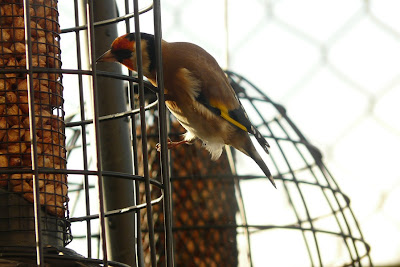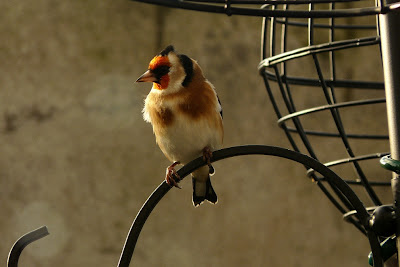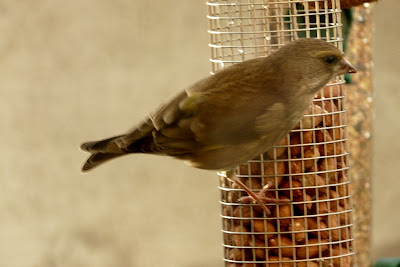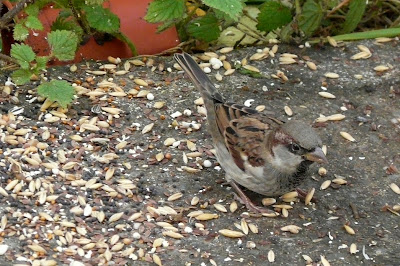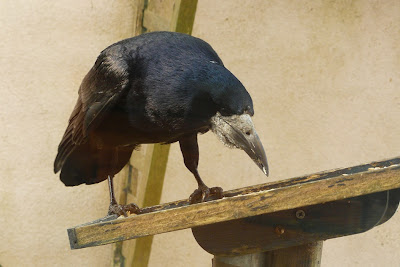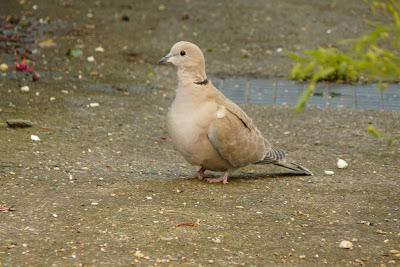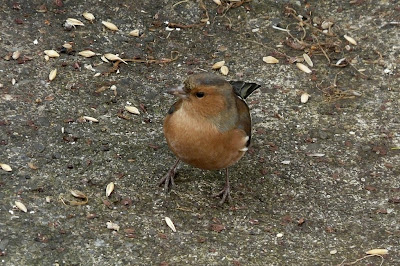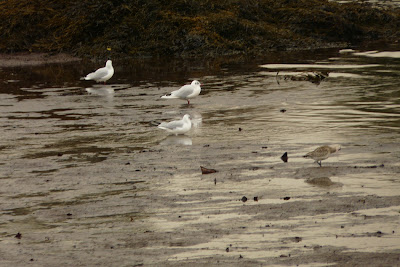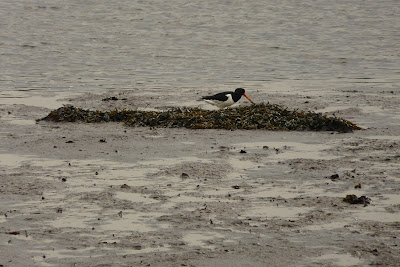
Greenfinch, Chloris chloris.
 2 Males
2 Males
 Pff. keeping that other male off MY food was hard work!
Pff. keeping that other male off MY food was hard work!The Greenfinches are definitely very bossy on the feeders, these days
Male Chaffinch and Great Tit, Parus major

Coal Tit, Parus ater

 Female House Sparrow, Passer domesticus( right)
Female House Sparrow, Passer domesticus( right)Blackcap, Sylvia atriciapilla
 Male.
Male.
My Duunock, Prunella modularis


Chaffinch, Fringilla coelebs
 Female
Female Male.
Male.
Rook, Corvus frugilegus

Most of my Corvids(Rook, Jackdaws and Hooded Crows. Plus some Magpies) are not very happy with the new set-up at the kitchen feeding station. They have difficulty flying to and landing on the little mesh birdtable, almost tipping it over, where the pole not tied up.
Another, large, birdtable is supplying the Collared Doves, Streptopelia decaocto, the Blackbirds, Turdus merula. And anyone else who comes along.

